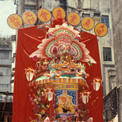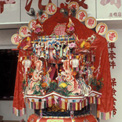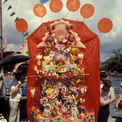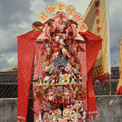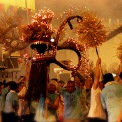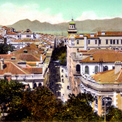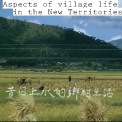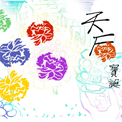-
History & Society
- Education in Pre-war Hong Kong
- History of Taikoo Sugar Refinery
- Hong Kong Products Exhibition
- Local Festivals Around the Year
- Post-war Industries
- Pre-war Industry
- The Hong Kong Jockey Club Archives
- Tin Hau Festival
- Memories We Share: Hong Kong in the 1960s and 1970s
- History in Miniature: The 150th Anniversary of Stamp Issuance in Hong Kong
- A Partnership with the People: KAAA and Post-war Agricultural Hong Kong
- The Oral Legacies (I) - Intangible Cultural Heritage of Hong Kong
- Hong Kong Currency
- Hong Kong, Benevolent City: Tung Wah and the Growth of Chinese Communities
- The Oral Legacies Series II: the Representative List of the Intangible Cultural Heritage of Hong Kong
- Braving the Storm: Hong Kong under Japanese Occupation
- A Century of Fashion: Hong Kong Cheongsam Story
Geography & EnvironmentArt & Culture- Calendar Posters of Kwan Wai-nung
- Festival of Hong Kong
- Ho Sau: Poetic Photography of Daily Life
- Hong Kong Cemetery
- Sketches by Kong Kai-ming
- The Culture of Bamboo Scaffolding
- The Legend of Silk and Wood: A Hong Kong Qin Story
- Journeys of Leung Ping Kwan
- From Soya Bean Milk To Pu'er Tea
- Applauding Hong Kong Pop Legend: Roman Tam
- 他 FASHION 傳奇 EDDIE LAU 她 IMAGE 百變 劉培基
- A Eulogy of Hong Kong Landscape in Painting: The Art of Huang Bore
- Imprint of the Heart: Artistic Journey of Huang Xinbo
- Porcelain and Painting
- A Voice for the Ages, a Master of his Art – A Tribute to Lam Kar Sing
- Memories of Renowned Lyricist: Richard Lam Chun Keung's Manuscripts
- Seal Carving in Lingnan
- Literary Giant - Jin Yong and Louis Cha
-
History & SocietyGeography & EnvironmentArt & Culture
-
View Oral History RecordsFeatured StoriesAbout Hong Kong Voices
-
Hong Kong MemoryTin Hau FestivalRecently Visited
Flower Cannons
Flower Cannon and its Decorative Elements
An essential element of popular religious practice and worship of Chinese deities great and small is the accompanying array of ritual paper offerings. The personalized and individualistic style of domestic and public worship in Hong Kong involves a variety of these offerings, which worshippers combine and use as they wish.
The worship of Tin Hau brings forth beautiful examples of the art of paper crafting, both everyday domestic offerings and special items crafted specifically for the occasion. Within the color and excitement of the formal birthday celebrations, attracting the greatest attention of the participants are the great Flower Cannons, or Fa Pau, the most spectacular of the paper offerings accompanying religious rituals in south China.
Modern Flower Cannons are ordered from ritual paper shops specializing in these items. They can range from six feet to nearly twenty feet in height, and are constructed with a strong frame of thick bands of bamboo. Over this frame is draped sheets of covering paper, and a strong base of bamboo completes the Cannon. This basic structure is then covered with a multitude of trimmings. The following images depict selected examples of Flower Cannons and of the decorative, yet highly symbolic and meaningful, elements of their design.
The Decorative and Meaningful Elements
All offerings bear a number of auspicious elements that are understood and appreciated by worshippers, and which are felt to enhance the overall efficacy, as well as the beauty, of the item. Flower Cannons are intensely decorated with auspicious elements, many of which are repeated in great numbers and in combination with other elements having the same meanings. Such crafting practices, when combined with the use of vibrant and felicitous colors, are seen to strengthen the over-all auspicious nature of the Cannon and increase the benefits for the devotees or associations ordering it.
Paper masters agree that all Flower Cannons bear the following lucky elements: a pair of dragons, a set of the Eight Immortals, the two Door Gods, the three Lucky Star Gods, a pair of Golden Flowers and their accompanying Spirit Red, and the representation of a bat. At the very top of the Cannon are the plaques bearing the name of the association or a lucky phrase devoted to Tin Hau. To this basic design, individual masters are free to add additional items as they wish to the body of the Cannon, so each Cannon is distinct.
BATS are auspicious creatures, symbols of prosperity and good fortune, and for this reason, they are placed near the top of the Cannon where all can see. They are crafted with great imagination. Flanking the bats are the pairs of Golden Flowers and their accompanying Spirit Red, offerings that are appropriate for honoring the gods.
LANTERNS are symbols of fertility, and are popular trimmings for the Cannon. Echoing the theme of fertility, and in thanks to Tin Hau for the benefits of life, many associations will add clusters of red-dyed eggs and ginger. Couples hoping to have children eagerly seek these items, placed on the Cannon by members who have had children in the previous year. Often placed near the eggs are the swatches of purifying pomelo leaves, considered helpful in expelling evil things.
Another set of popular trimmings are the models of real and fabulous animals, including dragons, unicorns, lions, phoenix, and peacocks. The dragon is the ultimate embodiment of auspiciousness, while unicorns symbolize families with many children.
Phoenixes are associated with peace and prosperity and are often linked with dragons, expressing the harmony of male and female. Lion dogs, the guardians of temples and official buildings, are also popular, and are crafted with great skill. Occasionally, animals from the real world are added to the trim. Colorful fish suggest completeness (as seen in the phrase "having a head and a tail") and are appropriate elements for offerings dedicated by fishermen. Peacocks symbolize dignity and beauty, while keeping evil away, and actual feathers may be used to complement crafted models.
Finally, no Flower Cannon would be complete without the many figures of deities and heavenly beings. The most important is that of the goddess herself, set in a secure niche within the bamboo frame. Other heavenly beings, meticulously crafted and dressed in bright silk, include the Eight Immortals, the Three Star Gods, the God of Wealth, and on occasion, famous figures such as Judge Pao or heroes and heroines of Cantonese opera dramas.
Flower Cannon masters are free to include other elements as they wish: golden coins, models of ships, clocks, wax candles and more can be added as desired. The spaces between all these elements are heavily filled in with paper or silk crafted flowers. Roses, peonies, chrysanthemums, lilies and morning glories are popular choices, adding beauty and an over-all good feeling to the Cannon.
Individual and corporate worshippers have myriad reasons for their devotion to Tin Hau and their desire to honor her with the Flower Cannon, but all recognize the magnificence and power of this "so beautiful" offering to an equally beautiful deity.
Photos
Copyright © 2012 Hong Kong Memory. All rights reserved.






